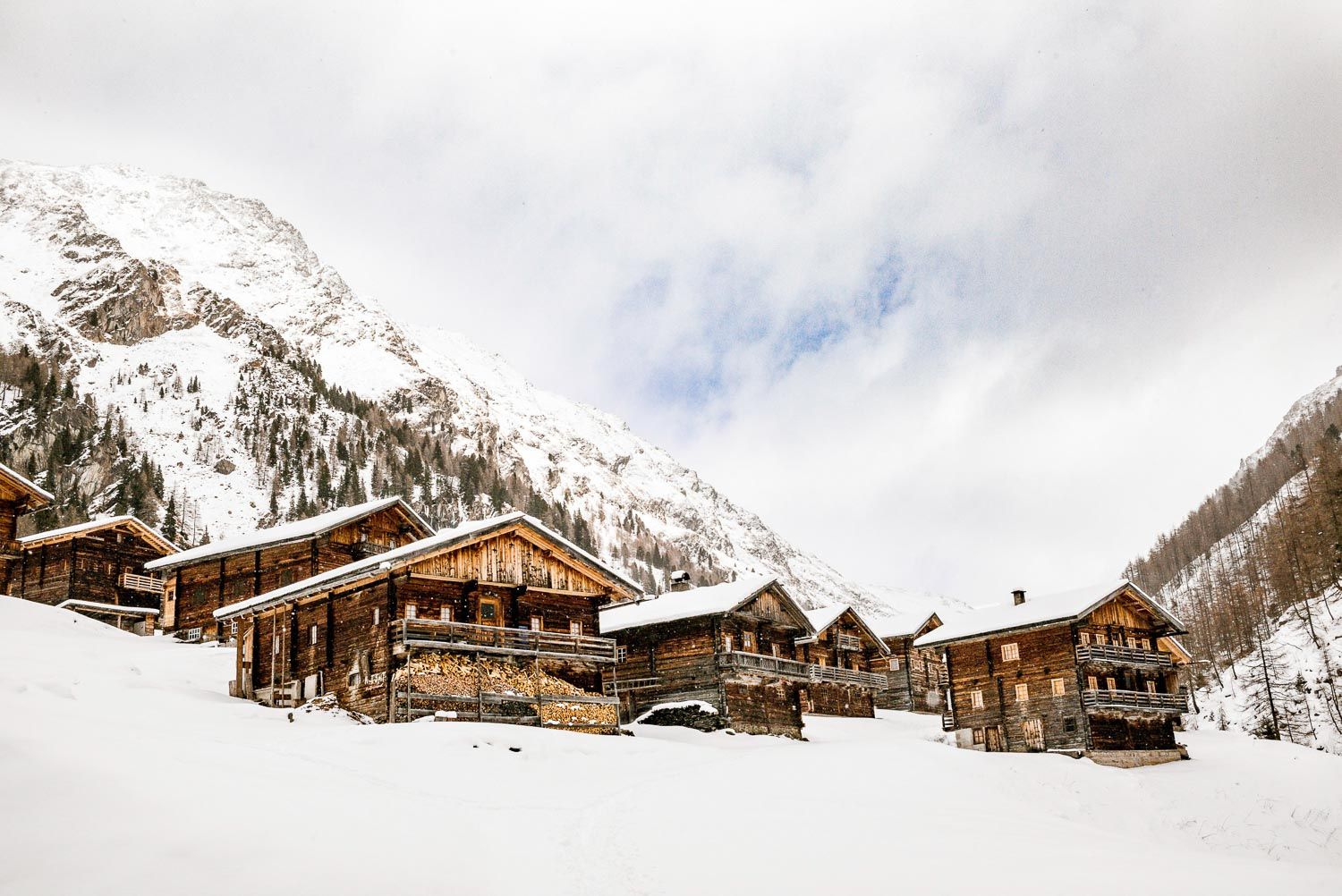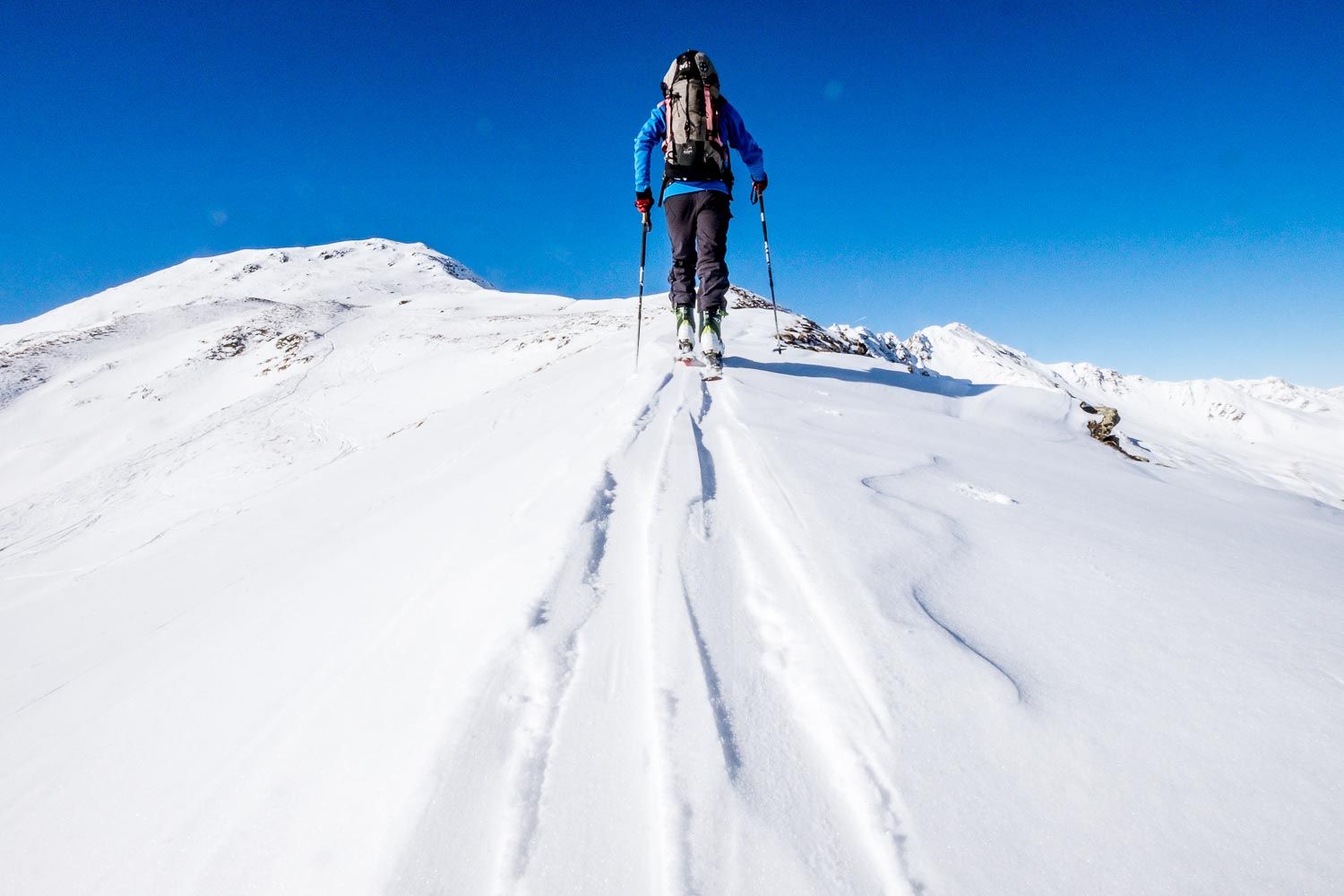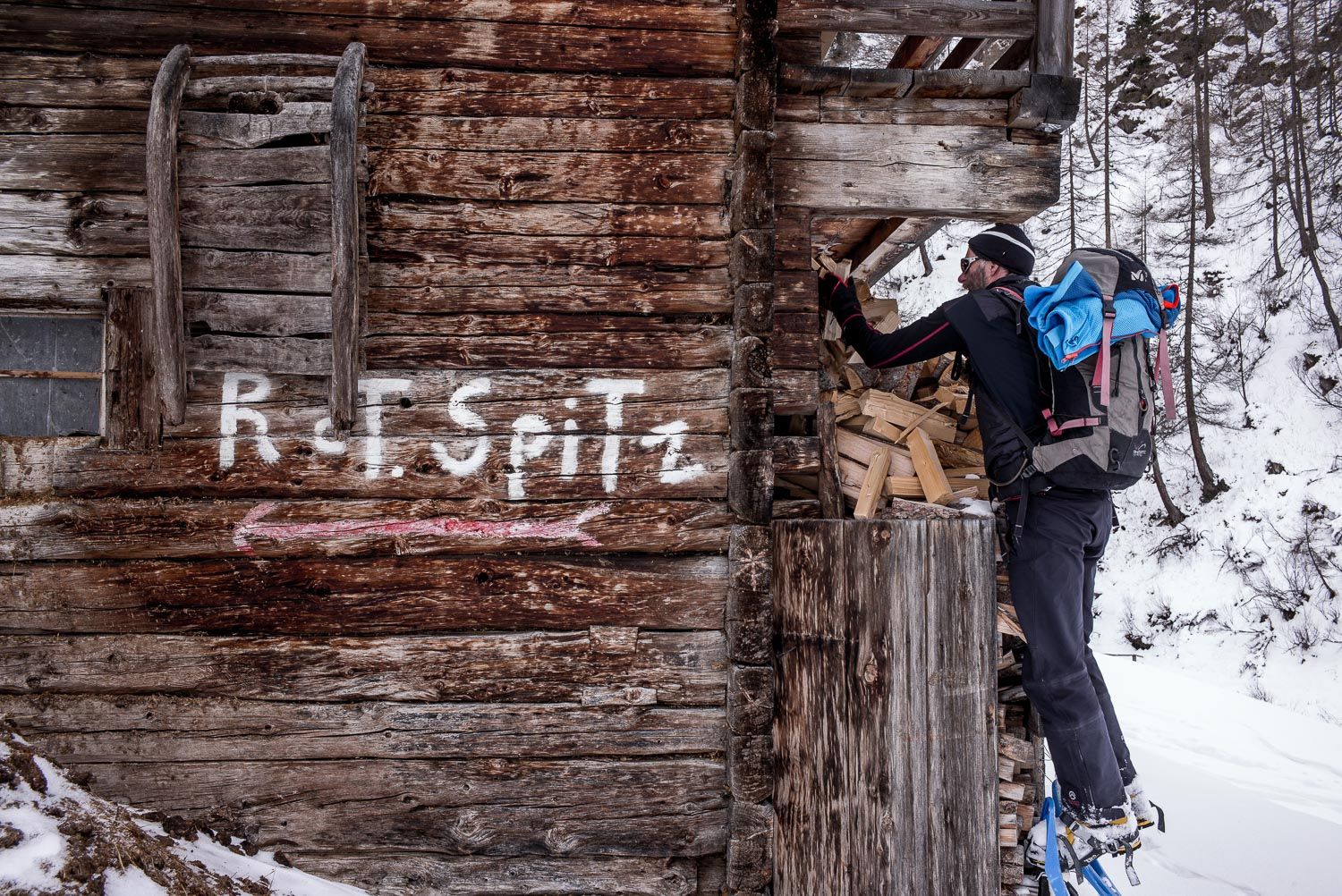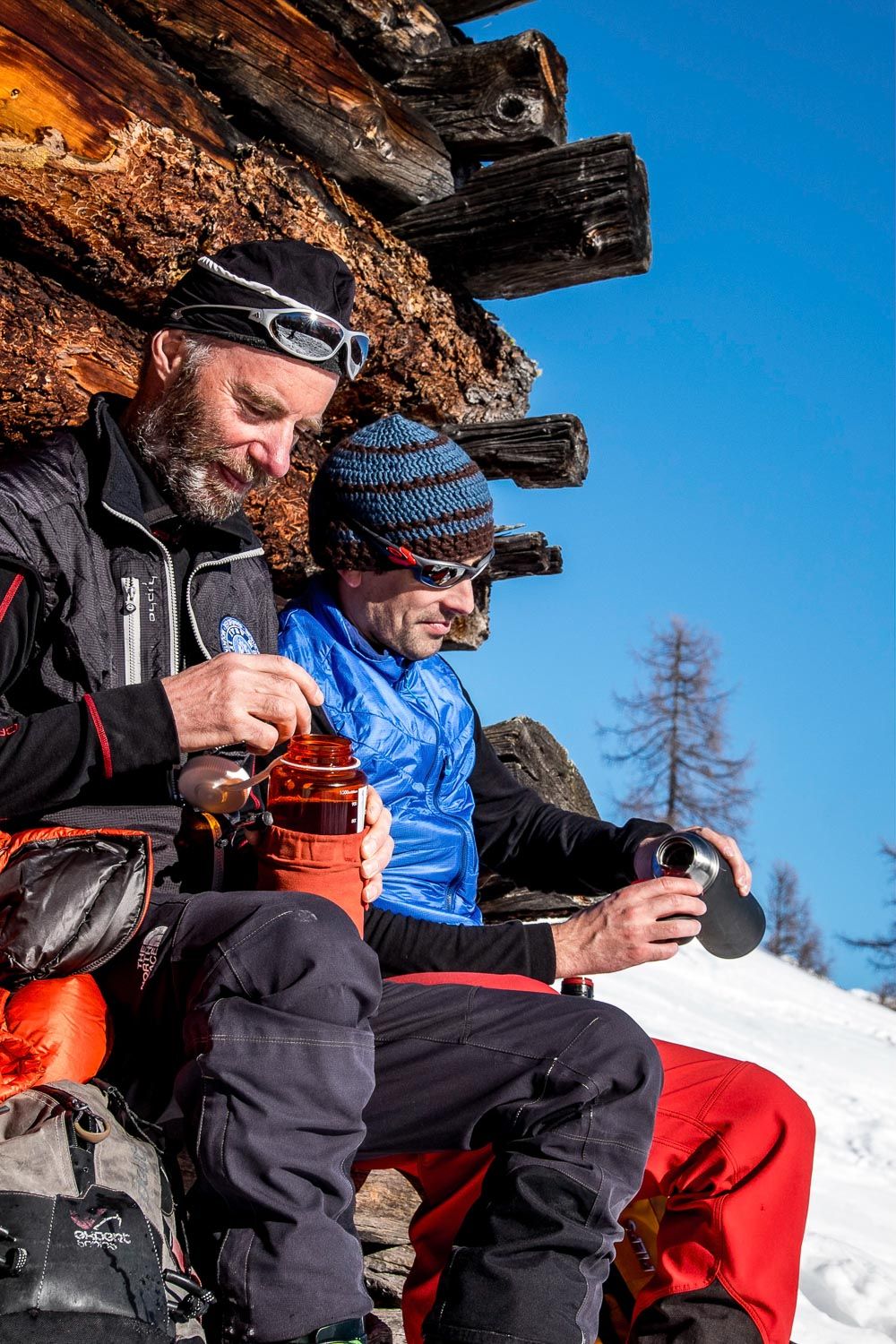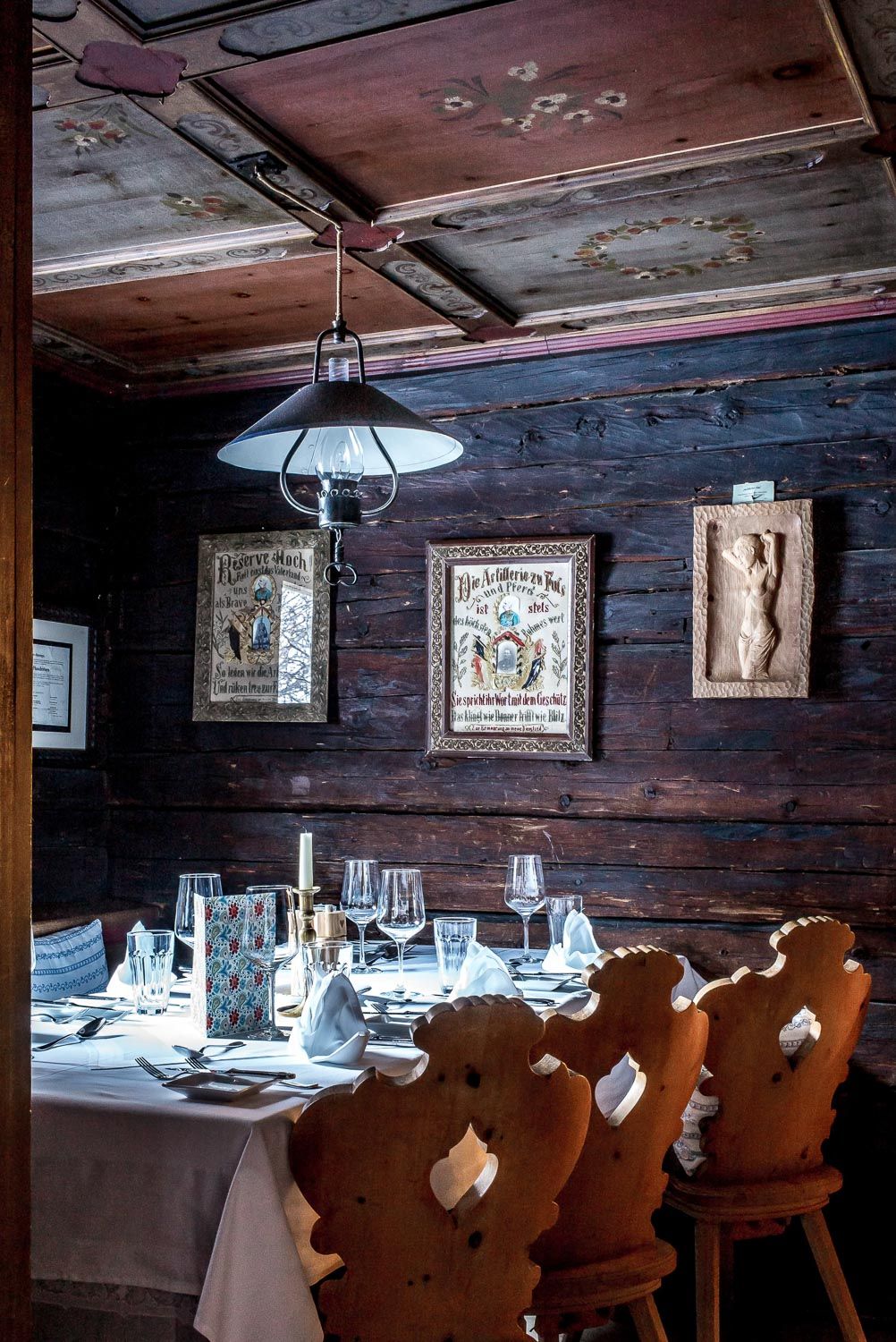To the rhythm of your breathing
Ski touring in Villgraten
Over thirty years ago, the inhabitants of the Villgraten valley were ridiculed. They voted against the arrival of a ski resort and therefore against big money. Thanks to the courage of the past, it is now one of the most beautiful and best-preserved regions in Austria and perfect for gentle winter sports such as ski touring and snowshoeing.
I follow the trail of mountain guide Hannes Grüner up the mountain. Don’t step, shove. The skins under my touring skis make them slide up, but not down. We are looking for a rhythm that will take us comfortably to our goal: the Pürglers Kunke at 2,500 metres. With a dream view of the surrounding mountains. From the Grossglockner to the Dolomites.
For now, the world is just small. The woods, the trail, the rhythm. Breathe in, breathe out, breathe in, breathe out. Until we pass the Alfenalm, a handful of ancient huts at 1,700 meters. Nothing seems to have changed in a hundred and fifty years. Hannes tells us that the alm was the setting for the film ‘Schwabenkinder’.
This is no sweet alpine fairy tale, but bitter history. Poor farmers could not feed their own children and sent them as servants to southern Germany. Some had it good there, others bad. This modern slavery – including a slave market – lasted until the middle of the last century.
As hard as history is, the winter landscape is soft. The snow has covered every nook and cranny. With every step up, we shake off the daily grind. Up here, only the here and now counts. How steep is the climb, what pace do we take, what is the best route, will it stay sunny or will it snow?

The higher we get, the fewer trees there are. At an alpine hut we find a place in the sun for tea and energy bars. Pure landscape, as far as we can see. It was a brave decision at the time by the Villgraters not to join in the winter sports craze of the late 20th century. It would have made them rich instantly. They themselves see things differently: ‘We didn’t want to become a ski village. Our quiet life in this beautiful valley is more valuable than a big bag of money’.
Thirty years ago, the Sanfter Tourismus was already established as a winter sport destination for those looking for peace and quiet and nature. Without slopes, lifts and snow cannons, but with the authentic valley, untouched mountains and pure air as the main attraction. Choosing uncompromising beauty. Meanwhile, this is exactly what an increasing number of winter sports enthusiasts are looking for.
We let ourselves go, make turns and disappear knee-deep in the snow despite the buoyancy of the touring skis.
An intense feeling of freedom races through the body
BEAUTY WRAPPED IN SIMPLICITY
To this day, only one large lift is needed to access the slopes of the Sillian ski area from the valley. Mountain guide Hannes hopes it will never happen: ‘Villgraten is perhaps Austria’s best kept secret and you mustn’t destroy that. The threat is always there, because it’s about money, but the easy way is not in the character of the Villgraters.’
In the meantime, we packed our backpacks again and resumed the climb up. Our trail goes right through the white void. The ridge in front of us has been the border between Austria and Italy since the First World War. We pass the Zollnerhaus, an old border post where Austrian customs officers hunted down smugglers of tobacco, sugar and especially cattle until the sixties.
Through the ice
Whether you can call it winter sports, we’ll leave in the middle. But more and more people are venturing into the icy waters of mountain lakes in winter. This is not only good for pushing your boundaries, but it is also healthy. Immersing yourself in water just above freezing point would have a positive effect on your resistance and blood circulation, relieve pain associated with rheumatism and combat depression. You walk through the snow to a hole cut in the ice, take a deep breath and carefully lower yourself into the dark water. Slowly, you become completely absorbed in your surroundings.
On the water
Windless, no ripples on the water, snowy mountain peaks all around you. With each stroke of your paddle, the perspective changes a bit. In Austria there are many large and small lakes where you can kayak not only on beautiful summer days but also in winter – as long as there is no ice of course. On the water you get a totally different view of the winter world than from the high mountains. A little experience is required during a winter paddling trip. Especially the wind can be very treacherous. For the less experienced kayakers therefore guided tours are offered. You will also be informed about the right equipment.

I try to stay in Hannes’ tracks, without going too deep. It is the art of ski touring. Not too hard, not too slow, just the right pace. This way you have enough air to reach the top and to ski down safely. A beautiful day like today helps a lot. What a view! First we had a view on the massif around Austria’s highest mountain Grossglockner, now the peaks of the Sextener Dolomites appear. A wow moment.
Somewhere between us and those jagged peaks lies the Pustertal Valley, which separates the distinctive Dolomite rock from the hard, primordial rock of the Alpine massif. Here we have the best of both worlds. A few more steps and… the top. Berg Heil. Plus a dream view of 360 degrees: Rotspitze, Kreuzspitze, Moses Gipfel…
We can also see the outline of the Villgratental which is only fifteen kilometres long and consists of the small villages of Ausservillgraten (1,287 m), Innervillgraten (1,402 m) and Kalkstein (1,639 m). There are two side branches. One leads to the Reiteralm, the other to the untouched Unterstaller- and Oberstalleralm. There we walked on snowshoes yesterday, as preparation and warm-up for touring.
It is beautiful with crucifixes, wooden bridges and a half frozen stream. With the Oberstalleralm as a highlight, a hamlet of seventeen old wooden houses around a stone chapel. In the past, farmers’ families would take their cows to this mountain in summer and stay there for months at a time. Partly this still happens, partly the houses are used as holiday homes in paradise.
Almost everything has remained as it once was. Beauty wrapped in simplicity. Like the long wooden gutters attached to the roof with crooked branches. The balconies without curly frills, but with straight planks.

FIRST PRIZE
On the summit of the Pürglers Kunke (2,500 m) we take off the skins from our skis, click the bindings into place and prepare ourselves mentally for the descent through the countryside. The normal route has been wasted the last few weeks due to lack of new snow, so Hannes chooses an alternative with a better chance of virgin powder slopes.
It doesn’t take long to hit the jackpot. A beautiful wall that lies half in the shade, half in the sun. We let ourselves go, make turns and disappear knee-deep in the snow despite the buoyancy of the touring skis. Below we can see the wooden huts of the Oberlipperalm. Descending without stopping. With clouds of drifting snow at our heels.
A feeling of intense freedom races through the body. The whole world feels light, beautiful and uncluttered. I totally agree with the Villgraters, in their choice for a different form of tourism, one without ski lifts, parking garages, chain hotels or devised entertainment for visitors. It’s pure authenticity you feel.
On the lower part of the descent the snow becomes more difficult to ski. Carefree cornering turns into fall-free steering. Mountain pastures and clearings take us back to our starting point in the hamlet of Kalkstein. There we crown the day with an excellent Spinatknödel, home-made of course.
In a ski resort, thanks to the lifts, you can do many more runs in one day. In contrast, there is peace, space and a feeling of freedom when you’re off the beaten track on touring skis. Moreover, the descent is extra nice because you have to earn every meter down first when hiking up. Back in Villgraten we talk some more, while the sun has disappears behind the clouds. Little flakes are whirling down.
Mountain guide Hannes gently rubs his beard: “This is a spa in the truest sense of the word.
Behind the huskies
With one foot firmly on the sled’s brake, you wait for the departure signal. The dogs in front of you are tramping in the snow, barking clouds in the freezing air. Three, two, one… and away! The dogs are shooting from their seats. Hold on tight, stand still and don’t let go. Not even if you fall. The huskies will stop pulling by themselves. When you let go, the span is gone and you are left alone in nature. Once accustomed to the place on the two gliders behind the sled, the real enjoyment begins. With a pleasant speed you glide through forests, over mountain pastures, along rivers. With the mountains all around you at all times. Whether you want to do an introductory course or a big tour through the winter world, in many places in Austria you will find a versatile offer.


